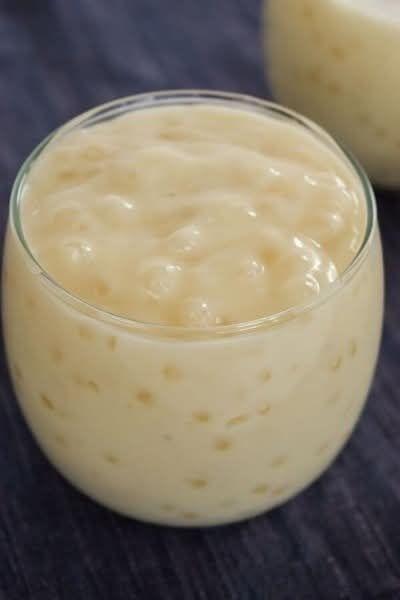ADVERTISEMENT
Pro Tips for Perfect Tapioca Pudding
Soak the Tapioca Properly: The soaking time for tapioca pearls can vary depending on the brand and size of the pearls. While 30 minutes is a general guideline, some may require longer. Make sure the pearls are fully hydrated before cooking to ensure they cook evenly and achieve the desired chewy texture.
Stir Constantly: Tapioca can easily stick to the bottom of the pan and burn if not stirred frequently. Use a wooden spoon or heat-resistant spatula to stir the mixture constantly, especially as it starts to thicken.
Adjust Sweetness to Taste: The amount of sugar can be adjusted depending on your personal preference. If you prefer a less sweet pudding, start with half the amount of sugar and add more gradually until it reaches your desired sweetness.
Use a Double Boiler: If you’re worried about the pudding scorching or cooking too quickly, you can cook it in a double boiler. This method provides gentler, even heat, which helps prevent the pudding from curdling or burning.
Experiment with Flavors: While vanilla extract is a classic addition, you can also try other flavors like almond extract, coconut milk, or even a splash of rum for a different twist. For a tropical variation, consider adding a bit of coconut milk to the mixture.
Chill for a Firmer Texture: If you prefer a firmer, set pudding, allow it to chill in the refrigerator for several hours or overnight. This will give the pudding a thicker consistency and enhance the flavor.
Serve with Toppings: Tapioca pudding is a versatile dessert that pairs well with various toppings. Fresh fruits like berries or mango, a dollop of whipped cream, or a drizzle of caramel sauce can elevate the pudding to a gourmet level.
Nutritional Information (Per Serving)
Based on a recipe that yields 6 servings.
Calories: 260 kcal
Total Fat: 7g
Saturated Fat: 4g
Trans Fat: 0g
Cholesterol: 85mg
Sodium: 95mg
Total Carbohydrates: 43g
Dietary Fiber: 0.5g
Sugars: 27g
Protein: 6g
Vitamin D: 10% of Daily Value (DV)
Calcium: 15% of DV
Iron: 2% of DV
Potassium: 6% of DV
ADVERTISEMENT
